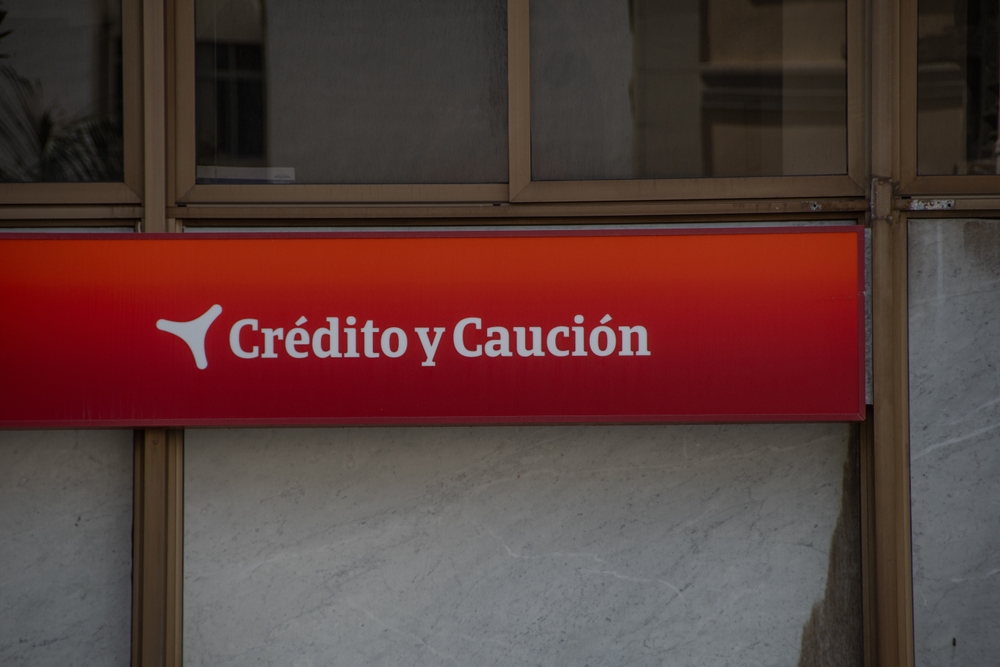For decades, the surety business occupied a quiet and expertise-driven niche of the insurance and financial services industry. The underwriting of guarantees for contract performance or financial obligations was managed largely by a small number of specialized companies or divisions within large multiline insurers. The field’s reputation for complexity, often long tail exposure, and the necessity for deep credit analysis and construction expertise discouraged non-specialist entrants. Its margins were modest but steady, and its capital requirements and regulatory oversight made it a difficult market to access. Today, that dynamic has changed. Several structural shifts have made surety attractive to standard insurance carriers, nontraditional investors, private equity sponsors, and technology-driven intermediaries who once overlooked it.
The first driver of this renewed interest is surety’s consistent profitability relative to other property and casualty lines. While general liability, automobile, and property insurance have been battered by inflation, catastrophic losses, and unpredictable claims cycles, surety has delivered remarkably stable underwriting results. Its combined ratios have frequently hovered near or below 80 percent, a level of steadiness that capital providers prize in uncertain markets. Unlike other lines that suffer from unpredictable frequency and severity of losses, surety’s claims tend to be infrequent but high-impact, allowing more consistent long-term returns. This reputation for dependable profit makes surety a good bet for stakeholders seeking predictable yield in an increasingly volatile insurance landscape.
Equally important is surety’s low correlation with catastrophe exposures. The majority of surety losses arise from performance failures, defaults, or contractual disputes rather than natural disasters or social inflation (with some exceptions). For reinsurers and alternative capital investors who are overexposed to catastrophe, casualty, or cyber risks, surety provides diversification as well as a known limit of total exposure (the “bond penalty”). The underwriting dynamics are closer to credit risk than traditional property or liability insurance, which gives portfolio managers a natural hedge. This structural distinction has caught the attention of reinsurers looking to deploy capacity in noncatastrophic lines, further enhancing surety’s attractiveness.
Another catalyst is the global infrastructure boom. Governments across the world are investing heavily in transportation, energy, and public works as part of post-pandemic stimulus programs and long-term sustainability initiatives. These projects almost always require bonding capacity to ensure performance, particularly in public private partnerships (PPPs) and regulated construction markets. The infrastructure pipeline in the United States, Canada, and emerging markets ensures strong demand for surety capacity for years to come. This expected growth gives new entrants the confidence that the sector will remain viable even if other insurance lines stagnate.
Perhaps the most transformative driver of attraction is the surge in private equity and alternative capital appetite. Considering current interest rates and the erosion of traditional fixed income yields suffering inflationary pressure, investors are hungry for short-duration, collateralized risks that offer reliable returns. Surety fits the requirement. It is governed by contractual obligations, often involves indemnification and collateral agreements, and carries limited tail exposure relative to other casualty lines. These features have drawn capital market innovation into the field, spawning a wave of private equity-backed managing general agencies, captives, fronting carriers, direct writers and reinsurers. These entities can scale rapidly by partnering with reinsurance or fronting paper without the regulatory burden of forming a full carrier. The combination of low capital intensity and the promise of steady returns makes surety an appealing new frontier for financial investors.
The profile of new entrants is diverse. The most visible are private equity-backed managing general agencies that use outsourced underwriting and digital tools to target specific niches such as license and permit bonds, small commercial bonds, and finite surety and surety-like products for emerging markets. By leveraging technology, these agencies can issue bonds more efficiently than traditional carriers and appeal to principals frustrated by slow underwriting cycles. Reinsurers are also entering the field more directly. Some are writing surety on a primary basis or through quota share arrangements in regions where they historically only offered reinsurance. This move blurs the boundary between primary and reinsurance markets and allows reinsurers to capture a larger portion of underwriting income.
Fronting carriers and program administrators represent another form of entry. They provide licensed paper to managing general agencies or specialty underwriters while transferring the majority of the risk through reinsurance. This capital-light model allows rapid market penetration and regulatory compliance without building a complete surety infrastructure. Similarly, technology-focused entrants or insurtech firms are using automated underwriting and digital issuance platforms to reach small to midmarket contractors. These firms emphasize speed, transparency, and embedded workflows that integrate with procurement or project management software. By disintermediating brokers, they threaten to redefine how small surety business is distributed but clearly work to the benefit of insurers and their program administrators. Banks and alternative financiers, especially in non U.S. markets, are offering financial guarantees that function much like surety bonds, competing with insurers by providing simpler access to credit facilities.
This influx of players creates multiple pressures on incumbents. The first and most immediate is pricing and margin compression. Many new entrants, flush with private capital, prioritize growth over profit. They pursue aggressive pricing or relaxed terms to capture market share quickly. Established sureties, which have traditionally emphasized disciplined underwriting and long-term stability, must choose between maintaining pricing discipline or following competitors downward. Either decision carries risk. Matching aggressive pricing can jeopardize future profitability, while refusing to compete may shrink the book and erode relationships with producers and contractors. A related concern is the erosion of indemnity standards and collateral requirements. New players often loosen indemnity clauses or accept lower collateral to attract business, particularly among smaller or cash-constrained contractors. These practices can shift industry norms, gradually normalizing weaker risk controls. For C-suite executives, the fear is a repeat of the pattern that preceded the mortgage crisis of the mid-2000s: a slow degradation of underwriting rigor in pursuit of short-term volume, followed by widespread losses when the economic cycle turns.
Distribution and technology disruption, especially A.I.-driven platforms, represent novel pressures. Since the inception of modern corporate suretyship, the business has relied on relationships among agents, brokers, and underwriters. These intermediaries provided market knowledge, handled documentation, and maintained client loyalty. Digital entrants are bypassing this system by embedding bond issuance directly into online procurement or project management platforms. This reduces friction for end users but also undermines the broker’s role. Established carriers that fail to match these digital capabilities risk losing market share, particularly in small commercial segments where speed matters more than brand loyalty. The inconvenient truth is that clients accustomed to making an Amazon purchase in the morning and finding delivery on their porch that very afternoon, will migrate from their sureties if they cannot perceive the “immediate service” element.
The strategic implications for executive leadership are profound. At the heart of the challenge is the need to look carefully at the business model. Should a surety company remain focused on high-touch, relationship-based underwriting, adopt a hybrid model that includes automated issuance for smaller bonds, or automate transactional business in its entirety to satisfy the “immediate gratification” posture? Most executives now believe all of these approaches must coexist. The ever-present danger is that a surety company may inadvertently weaken the judgment-based underwriting that has historically defined the business, so balancing innovation with discipline becomes a central governance issue.
Capital and reinsurance alignment are equally vital and present further strategic concerns. As new entrants rely heavily on reinsurance or capital markets, established players must maintain close partnerships with their reinsurers to preserve favorable treaty terms. Demonstrating consistent underwriting quality and transparency ensures continued access to reinsurance capacity at a reasonable cost. In an environment of tightening reinsurance terms and higher retentions, this alignment is a critical differentiator.
Talent acquisition and culture are and will continue to present a GRAVE challenge. Competing in a digital marketplace requires expertise in data science, software engineering, and product development, skills rarely found in traditional surety teams. Recruiting and integrating such talent demands cultural change. C-suite leaders must foster an environment where technology experts and career underwriters collaborate productively, combining analytical innovation with experiential risk judgment. The cultural tension between tradition and modernization will define the next decade of surety leadership, especially in an environment now characterized by an all-too-transparent pattern of mercenary behavior.
Brand and reputation remain among the few enduring competitive differentiators. Surety is, at its core, a trust business. Contractors, obligees, and public agencies rely on the financial strength and claims performance of their surety partners. In a crowded field of new and untested entrants, established carriers and MGAs that emphasize stability, historical claims practice excellence, and long-term relationships can enjoy “proof of reliability”. These intangible assets can preserve market share even as pricing and technology pressures mount.
The broader question for the industry is whether the influx of new players represents a temporary cycle or a structural transformation. One scenario suggests that many newcomers will eventually withdraw after experiencing losses they did not anticipate, leading to a reconsolidation under established carriers. Another scenario envisions a lasting bifurcation, i.e., large, complex performance bonds and infrastructure projects remain the domain of traditional sureties, while small, transactional bonds shift permanently to digital or capital-light issuers. Most analysts favor the second outcome, predicting a dual-tier marketplace in which technology-supported entrants dominate high-volume segments and incumbents focus on complex accounts in which personal relationships are key.
For C-suite executives, this bifurcation presents both a threat and an opportunity. The threat lies in the erosion of pricing advantages and loss of smaller accounts that provide steady, low-risk income. The opportunity lies in leveraging digital tools and strategic partnerships to serve emerging market segments without sacrificing core underwriting standards. Successful executives will manage to integrate innovation selectively while maintaining conservative credit practices. Those who cling to purely traditional models risk obsolescence, while those who chase technology for its own sake risk catastrophic underwriting errors. The path forward demands both discipline and imagination. Surety’s attractiveness to potential entrants reflects changes in capital markets and their appetites, infrastructure investment, historical success of surety programs generally, and technology. Stable profitability, low correlation to catastrophe, and the appetite of private equity have made it one of the few insurance lines where growth and predictability coexist. The eight-hundred-pound gorilla in the room is that the same features that attract new capital also invite aggressive competition, threatening to undermine the discipline that made the line stable in the first place. C-suite leaders must double down on their core business with rigorous underwriting, preserve their reputations for solvency and reliability, and embrace new efficiencies offered by emerging technologies but ONLY where doing so strengthens rather than weakens a healthy internal culture. The future of surety will likely be defined not by the entrants who disrupt it but by the incumbents who adapt most intelligently to the forces now reshaping the industry.
~ C. Constantin Poindexter, MA, JD, CPCU, AFSB, ASLI, ARe
Bibliography
- Aon. 2025. 2025 Global Construction Insurance and Surety Market Report. Aon.
- Artemis. 2025. “Alternative Capital Has Not Yet Reached Its Full Capacity, Will Likely Grow.” Artemis.
- AXA XL. 2025. AXA XL Credit and Surety Market Survey 2025. AXA XL.
- Insurance Information Institute. 2015. Alternative Capital and Its Impact on Insurance. III.
- LM Re / The Insurer. 2025. “LM Re’s Haug: Navigating Trends in Trade Credit and Surety.” The Insurer.








































